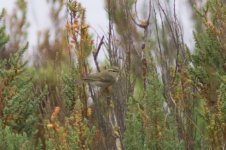Only the fact that people consistently report any green parakeet as Ring-necked despite the fact that Norfolk & Suffolk has no breeding population of Ring-necked Parakeets, despite the fact that they are non-migratory and despite the fact that there are lots of other species of green parakeet kept in captivity and that frequently escape.
You wouldn't identify a fly-over unstreaked Acro from the car would you?
Agree with most of what you say,although you comparison of a rn parakeet with an Acro is not so sharp; I know which one I would take a punt on!
Had you have made your points in a different manner,eg "thanks for reporting the sighting,but had you considered....", I probably would not have posted. Way too many posts with an accusational tone on here of late,we should be praising interest in the hobby.
Cheers,
Jim.





